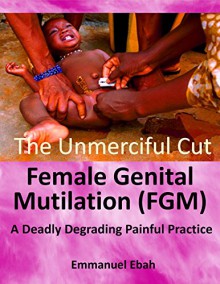Every year around the world, about 140 million girls and women are subjected to a deadly, degrading and painful procedure, whereby part of the genital is cut off with crude and unhygienic tools, in the name of taming the female body. This practice is known as Female Genital Mutilation (FGM), also...
show more
Every year around the world, about 140 million girls and women are subjected to a deadly, degrading and painful procedure, whereby part of the genital is cut off with crude and unhygienic tools, in the name of taming the female body. This practice is known as Female Genital Mutilation (FGM), also frequently referred to as female circumcision or Female Genital Cutting (FGC).
The aim of this book is to enable a coherent understanding of Female Genital Mutilation, with respect to its origin, how it is performed, the health, emotional, psychological, social, economic and other consequences that this barbaric procedure impels upon its millions of victims around the world. The book has also identified all the countries in the world where Female Genital Mutilation is practiced, and examined the cultural, religious and aesthetic reasons usually cited to justify the practice. The book has further provided graphic accounts of the most vivid cases of Female Genital Mutilation practices and rituals. The book then supplies a selection of the most chilling accounts provided by victims of Female Genital Mutilation from around the world.
Female Genital Mutilation (FGM) is the ritual removal of all or some of the external female genitalia. It is usually carried out by a traditional circumciser, using a blade or razor, often without administering anaesthesia on the victim. Generally, the procedure can include removal of the clitoral hood and clitoral glans (the visible part of the clitoris), removal of the inner labia, and in the most severe form known as infibulation, removal of the inner and outer labia and closure of the vulva. In this last procedure, a small hole is left for the passage of urine and menstrual fluid, and the vagina is opened for intercourse and during childbirth. Health effects depend on the severity of the procedure, but can include recurrent infections, chronic pain, cysts, an inability to get pregnant, complications during childbirth and fatal bleeding.
According to the World Health Organisation (WHO), approximately 133 million girls were subjected to Female Genital Mutilation (FGM) in the year 2014 alone. According to the United Nations Population Fund (UNFPA, 2015), in Africa, Female Genital Mutilation is known to be practiced amongst certain communities in 29 countries, comprising: Benin, Burkina Faso, Cameroon, Central African Republic, Chad, Côte d'Ivoire, Democratic Republic of Congo, Djibouti, Egypt, Ethiopia, Eritrea, Gambia, Ghana, Guinea, Guinea-Bissau, Kenya, Liberia, Mali, Mauritania, Niger, Nigeria, Senegal, Sierra Leone, Somalia, Sudan, Tanzania, Togo, Uganda and Zambia.
Certain ethnic groups in Asian countries also practice Female Genital Mutilation, including communities in India, Indonesia, Malaysia, Pakistan and Sri Lanka. In the Middle East, the practice occurs in Oman, United Arab Emirates and Yemen, as well as in Iraq, Palestine and Israel (UNICEF, 2015).
In South America, certain communities are known to practice Female Genital Mutilation in Columbia, Ecuador and Peru. In many Western countries, including Australia, Canada, Europe, the United States and the United Kingdom, Female Genital Mutilation is practiced amongst diaspora communities from countries where the phenomenon is common.
Throughout this book, the phrases Female Genital Mutilation (FGM), Female Circumcision and Female Genital cutting are used interchangeably.
show less

